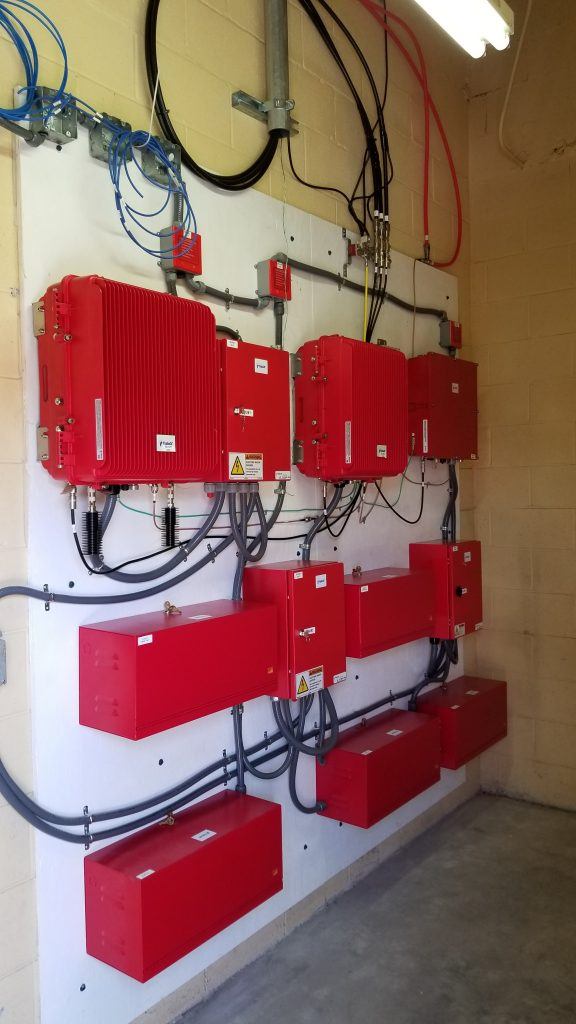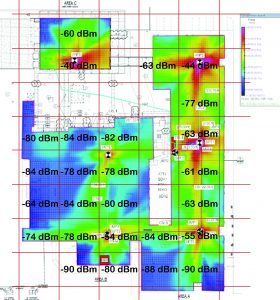Staying Connected in Crisis: Emergency Responder Radio Communication Systems
November 10, 2020
Emergency Responder Radio Communication Systems
Telecommunications refers to information movement through different types of technologies over a wire, radio, optical or other systems. An essential tool for businesses, it allows companies and people to communicate and even deliver potentially lifesaving information effectively.
An in-building component of telecommunications, an Emergency Responder Radio Communication System (ERRCS) is an extension of the outdoor wireless two-way radio system that First Responders (Fire, Police, EMS, etc.) currently use. Still, the radio coverage is limited to just the interior of the building where the system is installed. Today, the system is primarily used for voice communications, but applications containing important information such as a first responder’s physical condition, location, live video streams, mixed reality lenses, sensor data, and other innovative applications are planned for the near future.
With today’s importance of connectivity as an everyday utility, a system designed to enhance public safety communication is critical to ensure that first responders and building operators can communicate clearly in case of emergency or times of crisis. Additionally, many advocacy groups are pushing to standardize and enforce these laws that have been enacted as more jurisdictions and municipalities pass mandates requiring them.
As an example, North and South Carolina adopted building code IFC 2018. Detailed in Section 510, all new buildings constructed after January 1, 2019 (except for one- and two-family residences) are required to ensure that the ERRCS has sufficient radio signal strength to be fully operable throughout the interior of the building. On top of that, many local jurisdictions are starting to add regulations and requirements in addition to the State minimums. Having a partner that knows the requirements and regulations is vital to a successful implementation.
What Is the ERRCS Process?

Emergency Responder Radio Communication System.
Successful in-building wireless solutions require individual customization for each site. S&ME focuses on the design, engineering, deployment, integration, and commissioning of in-building wireless systems to address connectivity, reliability, and capacity of wireless needs in any environment.
In a new or existing facility, we complete a baseline study of the building floorplan where we benchmark the current Radio Frequency (RF) coverage coupled with the design requirements of a building. We can determine if an in-building ERRCS is needed before construction even begins. Alternatively, if a building is nearing construction completion, we perform the required testing to ensure compliance, a must-have in the regulated world of public safety. If the benchmark testing highlights the need for an in-building wireless ERRCS, S&ME can design, implement, and commission the system to meet state and local jurisdiction requirements.
Emergency Responder Radio Communication System Case Study

Heatmap detailing predicted radio system signal strength and actual measured results.
S&ME’s Telecommunications Team tested an ERRCS at a middle school in South Carolina.
The project’s General Contractor contacted us to benchmark the existing public safety signals at a middle school in South Carolina. Our team contacted local emergency responders to verify which frequency bands and channels (VHF, UHF, P25) were actively used. As work began on the project, we met with a local firefighter and used his radio and our spectrum analyzer, which samples the radio frequency spectrum and displays the signal levels for certain frequency bands. With this, we were able to generate a qualitative and quantitative signal analysis that showed that we had a usable signal outside of the building and borderline acceptable coverage inside the building. The middle school was renovating and had a large section of windows not installed. The windows were planned to be replaced with a Low-E glass, which would drop the signal quality below acceptable levels.
The General Contractor reviewed our findings and agreed that a system was required to comply with IFC 510. We designed a system that would incorporate all the public safety channels (VHF, UHF, P25) and process them through one Distributed Antenna System (DAS) throughout the facility.
Our team tested the system to verify the coverage levels throughout the building. And lastly, the State Fire Marshal certified that the building met the criteria set out in IFC 2018 Section 510. With the Fire Marshal’s certification, the AHJ (SC Office of School Facilities) was able to approve the system and the building.
Completion of this project and our involvement with RF design, construction, and engineering services ensured safety for students, school administration, first responders, and the community at large.
